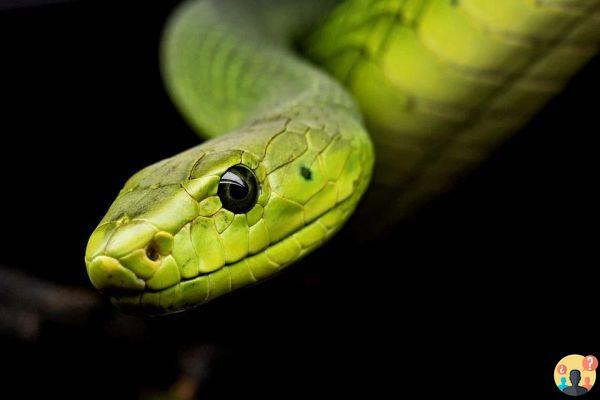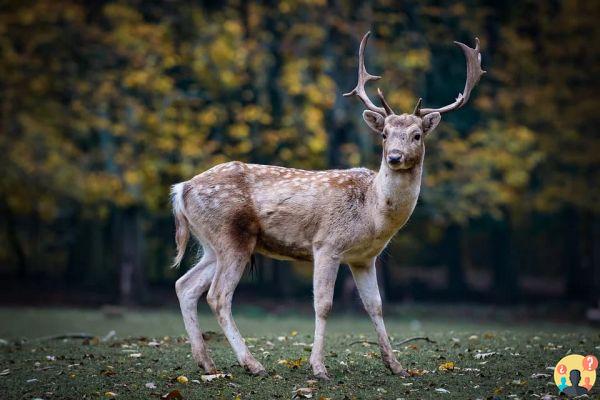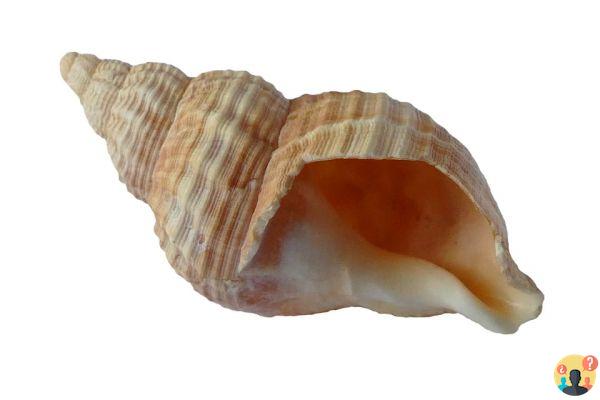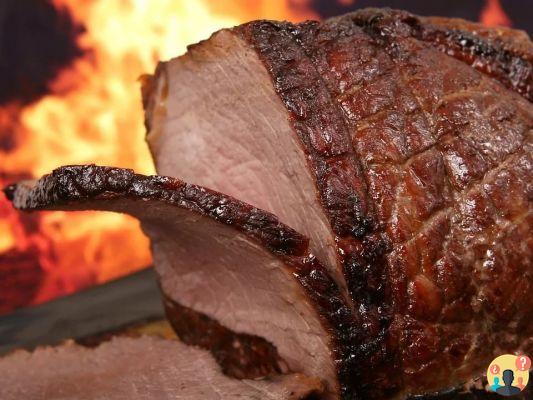
During the winter months in colder climates, snakes enter a state of dormancy similar to hibernation which is technically called brumation. They use cues such as the number of hours of daylight, humidity, and barometric pressure to know when it's time to go into hibernation.
Snake hibernation is a state of deep sleep in which an animal conserves energy by slowing down its metabolism, heart rate, and respiratory rate. Only snakes in cold climates hibernate. They will dig warm burrows, logs and burrows to survive the long, cold winter.
Where do snakes hibernate?
Snakes choose to hibernate in a warm place that is less likely to be affected by wind or rain. Caves, tree stumps, wood piles, storage spaces, basements, garages, and open pipes are great places to settle in during the winter.
Places where snakes hibernate are called hibernacula and include dens and burrows created by other animals such as rodents, squirrels, and other snakes.
A minority of snake species can dig hibernacula themselves, while others use other people's burrows. The pine snake is one of the few that excavate its own hibernaculum. A snake may use the same hibernaculum for many years and in different seasons.
Snakes often share dens with other snakes to share body heat for better survival during winters. The den can be made up of babies, males and females of the same or even different species.
Do snakes hibernate in houses?
Snakes can hibernate inside a home, including in garages, attics, under pipes, and in house foundations.
This is because homes are often warm places where the snake can escape sub-zero temperatures. If you live in an area where there are wild snakes, it is possible for a snake to be found under the foundation of your home during the winter.
It all depends on whether the conditions in the house are suitable for the creature. They look for dark, moist, drip-free spaces below freezing.
Sometimes people find a hibernating snake and think it is dead. The snake will be cold to the touch, have dilated pupils, and might even have loose skin from losing weight during the winter.
But, when the snake is exposed to the sun for 30 minutes, it may wake up and move away.
Why do snakes hibernate?
As cold-blooded animals, snakes generally rely on the heat of the sun for warmth. During winters, when the temperature is too low, they cannot effectively control their body temperature.
To survive the winter, snakes close their systems and fall asleep. During this period of inactivity, they stop feeding and may not defecate or move for weeks. To stay hydrated, they absorb water through their skin. This helps them get through the winter.
When do snakes hibernate?
The period of hibernation (also known as brumation) of snakes depends on their climate, but in cooler regions they go into hibernation in late fall and emerge in spring.
Snakes in warmer climates, including parts of India and Australia, are less likely to hibernate and remain active during the winter months.
There is a lot of research on snake hibernation in the northern United States and Canada, as winter temperatures drop below freezing in that climate. For snakes like the northern pine snake, hibernation begins anytime from September through December and continues until March or April, when the average daytime temperature is around 60°F.
Entering the lair is called an entrance, while leaving the lair is called an exit.
Do snakes hibernate in groups?
Some species of snakes hibernate in groups, while others hibernate alone.
Snakes are often solitary creatures. But when it comes time for hibernation, hanging out in groups seems to help them get through the winter. They can retain body heat when sleeping together in a bag.
The spooky sake wells can be filled with thousands of snakes that hibernate together during the long winter. In fact, the town of Narcissus, Manitoba attracts up to 70 hibernating gartersnakes a year. Near the city there are large underground limestone caverns that regulate the temperature in winter so that it never drops below freezing.
What species of snakes are known to hibernate?
Copperhead snakes prefer moist, wooded habitats near ponds, lakes, and rivers. They hibernate in steep areas near hills and receive sunlight. Lair locations for copperheads include stone walls, caves, logs, and holes.
They often share their lair with other snakes and even different species like black runners and rattlesnakes. They hibernate in the fall and emerge in early April.
Copper snakes are venomous and are found in abundance in South America. Its coloring varies from basic brown to beige. This coloration helps them camouflage themselves when surrounded by foliage.
Do snakes hibernate?
Garter snakes like to hibernate in rock piles, stumps, crayfish burrows and rodent burrows. They are even found in cellars to spend the winter. In the hibernaculum, they hibernate with hundreds of other gartersnakes and coil around each other to keep their bodies warm at a minimum temperature.
Common garter snakes are non-venomous and 3 feet long. They are found throughout the United States and along the Gulf of Mexico. Their hibernation period begins from late October to March or early April. Common snake burial sites include burros or natural cavities.
Do snakes hibernate?
Snakes hibernate between November and March. They are mainly found in moist habitats, dry meadows, gardens and ponds. Hibernation areas include fallen trees, rabbit burrows, and compost piles.
They are abundant in England and Wales. They are usually greenish in color and have a characteristic yellow and black collar.
Do vipers hibernate?
Common European Adders (also called Adders) hibernate from October to March in sheltered, dry places, such as those borrowed from fallen trees and an old rodent.
Do corn snakes hibernate?
Corn snakes become less active during the fall and winter months and bruise under loose bark, rocks, debris and under logs.
Seen in wooded ruts, meadows, rocky slopes and barns. They have a checkerboard pattern on the belly with alternating rows of black and white spots.
Do milk snakes hibernate?
Milk snakes emerge from November to mid-April in common dens such as burrows and rock crevices. They may share their dens with rattlesnakes.
Milk snakes are non-venomous and are found in a variety of habitats including forests, grasslands, rocky slopes, and grasslands.
They are active at night and are rarely seen during the day.
Under certain circumstances gartersnakes and pit vipers may also undergo brumation instead of hibernation to survive extreme weather conditions.
What is snake brumation?
The hibernation of cold-blooded animals like snakes is called brumation, while mammals technically hibernate.
The difference between hibernation and brumation is that during brumation, snakes may wake up to drink, go to the toilet, and sunbathe. But, just like hibernation, they still spend most of the winter in a dormant state.
Generally, mammals like bears go into complete hibernation, while snakes go into brumation. They choose brumation over hibernation because they are cold-blooded animals, so they have different needs than mammals, which better regulate their internal body temperature.
For example, these scientists have examined timber rattlesnakes and found that they sometimes come out of hibernation to bask on rocks. Although there is minimal energy expenditure that occurs when snakes wake up in mid-winter, these intermittent periods of activity can help snakes get through the winter by helping them raise their body temperature during the winter months. warm winter days.
Don't worry too much about this terminology unless you are an animal scientist. Even many scientists confuse the two terms.
How do mist snakes react to climate change?
Snakes will seek out a place to hibernate that is resistant to flooding and freezing, but also allows air to circulate. inside from outside.
This often involves finding a den-like hole in the ground deep enough that the ground around the snake does not reach freezing level. Some scientists call this the “life zone”.
During the cold season, if a heat wave occurs, the snakes may come out of the brumation for a while. This allows them to venture outside to find food and bask in the sun. Once the weather turns cold again, they return to their brumation state.
It is important for snakes to digest their food before entering a state of hibernation, as the food in their digestive tract will break down and kill them. Slender snakes are less likely to survive the brumation period.
Conclusion
Snakes hibernate in warm, safe places to get through periods of extreme cold. Caves, tree stumps, woodpiles are excellent places for hibernation.
This allows them to reduce their body's metabolism and survive with minimal energy expended. Rattlesnakes, Gartersnakes, Copperheads, etc. are known to go through hibernation.
Some snakes may experience brumation, a state similar to hibernation. Snakes are not completely inactive in brumation. Corn snakes and milk snakes are important snake species that suffer from brumation.
Snakes in cold climates hibernate between September and April, depending on the severity of the weather. Snakes can emerge from the brumation if the weather becomes favorable.

























